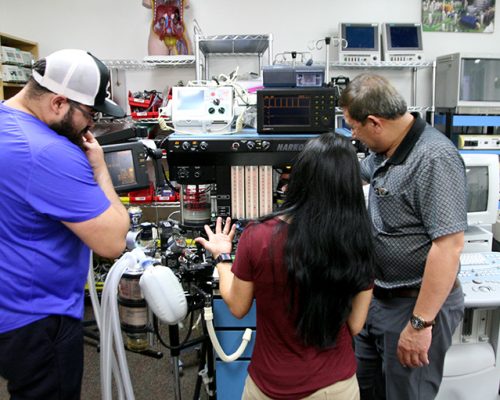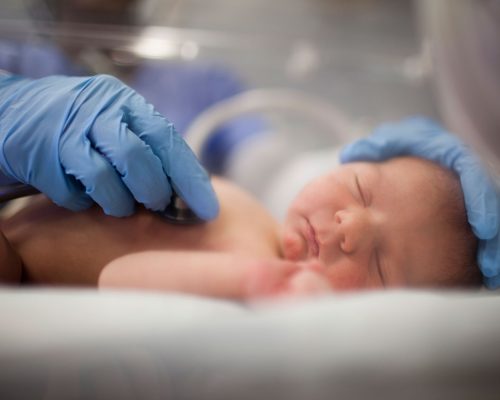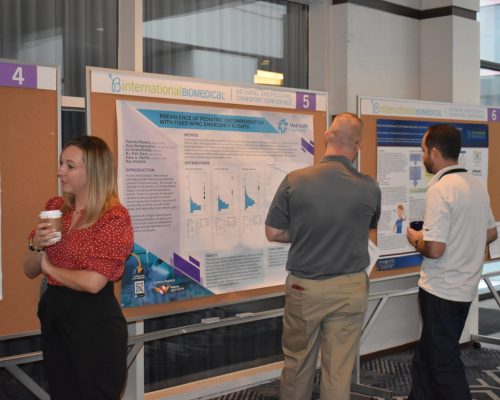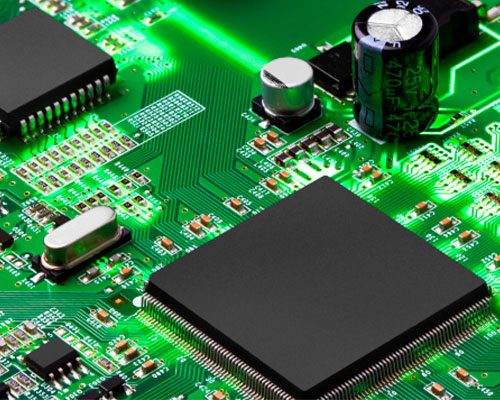Phototherapy, also known as light therapy, is a widely recognized and highly effective treatment for managing neonatal jaundice in newborns and infants. This non-invasive treatment involves exposing the baby to controlled levels of blue or blue-green light to reduce high levels of bilirubin in the blood. At International Biomedical, we manufacture infant phototherapy products to provide vulnerable neonates with the phototherapy treatment they need to recover.
Understanding Neonatal Jaundice
Neonatal jaundice is a common condition that affects many newborns, usually appearing within the first few days of life. In most cases, it is a temporary and harmless condition. However, if left untreated, high levels of bilirubin can lead to severe complications, including kernicterus, a type of brain damage.
Bilirubin is a yellow pigment produced during the normal breakdown of red blood cells, and elevated levels can lead to jaundice, which is characterized by the yellowing of the skin and eyes. Halogen or fluorescent light therapy is the most common and effective form of treatment for neonatal jaundice.
Newborns are particularly susceptible to jaundice due to several factors:
- Immature Liver: A newborn’s liver is not fully developed and may not be efficient in processing and excreting bilirubin.
- High Red Blood Cell Turnover: Babies have a higher red blood cell turnover rate, leading to increased bilirubin production.
- Breastfeeding: Sometimes, breastfeeding can contribute to higher bilirubin levels due to certain substances in breast milk or insufficient milk intake in the early days.
How Phototherapy Treatment Works
Phototherapy uses blue light in the spectrum of 430-490 nanometers, which safely penetrates the skin and alters the structure of bilirubin molecules. This makes it easier for the baby’s body to break down and eliminate through urine and stool.
The two types of phototherapy below are primarily used to treat jaundice.
Conventional Phototherapy
This involves placing the baby under a halogen or fluorescent lamp while protecting the eyes with a mask to prevent damage. Newborn skin is also much thinner and more sensitive than adult skin, making it a priority to provide adequate skin and eye protection during light therapy.
Babies and infants can be securely wrapped in our BiliPod Phototherapy Swaddle to maximize comfort during phototherapy treatments. The BiliPod keeps neonates comfortable without restricting their range of motion as they sit through light therapy sessions. The mesh is light and airy to prevent overheating and allows 95% of light emissions through the fabric for effective healing.
Oftentimes, it takes multiple treatments to cure jaundice, but the length of time neonates must receive phototherapy treatments depends on their condition, its severity, and their healthcare provider’s treatment plan.
Fiber Optic Phototherapy
Also known as “biliblanket” therapy, this method uses a fiber optic pad that emits light and can be wrapped around the baby, allowing for more mobility and comfort while receiving treatment.
Our BiliCocoon Kangaroo Care Fiber Optic Phototherapy System allows parents and other caregivers to provide necessary skin-to-skin contact while effectively treating neonatal jaundice. It’s comfortable and safe and can be used in conjunction with warmers, incubators, and kangaroo care settings to meet various medical needs in more than one setting.
Benefits of Phototherapy
Phototherapy stands as a cornerstone in the treatment of neonatal jaundice, offering a safe, non-invasive, and highly effective solution for managing elevated bilirubin levels in newborns. This innovative treatment uses specific wavelengths of light to transform bilirubin into a form that can be easily eliminated by the infant’s body, thereby reducing the risk of severe complications such as kernicterus.
The benefits of phototherapy extend beyond its primary function, contributing to the overall health and well-being of affected infants by promoting better sleep patterns, reducing stress, and supporting crucial developmental processes.
- Non-Invasive: Phototherapy is a non-invasive treatment that does not require medication or surgery.
- Effective: It is highly effective in reducing bilirubin levels quickly and safely.
- Safe: With proper monitoring and eye protection, phototherapy is safe and poses minimal risk to the infant.
- Flexible: The use of fiberoptic phototherapy allows for treatment at home, reducing the need for extended hospital stays.
Conditions Treated by Phototherapy
While phototherapy is most commonly used for neonatal jaundice, it can also be used to treat other conditions in infants, including:
- Crigler-Najjar Syndrome: A rare genetic disorder affecting bilirubin metabolism.
- Gilbert Syndrome: Another genetic disorder causing mild jaundice due to reduced bilirubin processing.
- Hemolytic Disease of the Newborn: This is a condition where the baby’s red blood cells are broken down faster than normal.
Phototherapy is also used to treat skin conditions like eczema and psoriasis.
Monitoring and Managing Phototherapy
Healthcare providers closely monitor the baby’s bilirubin levels, hydration status, and overall well-being during phototherapy. Regular blood tests are conducted to measure bilirubin levels and determine the duration of treatment. In some cases, additional therapies such as exchange transfusion may be necessary if phototherapy alone is insufficient.
Safe and Effective Light Therapy Solutions from International Biomedical
Phototherapy is a crucial intervention in the management of neonatal jaundice. It offers a safe, effective, and non-invasive solution to a common condition among newborns. By understanding the principles and benefits of phototherapy, healthcare providers and parents can ensure the best possible outcomes for infants affected by high bilirubin levels.
At International Biomedical, we provide innovative solutions that support neonatal care. Our advanced phototherapy equipment is designed to deliver optimal treatment outcomes, ensuring the health and well-being of the youngest and most vulnerable patients.









